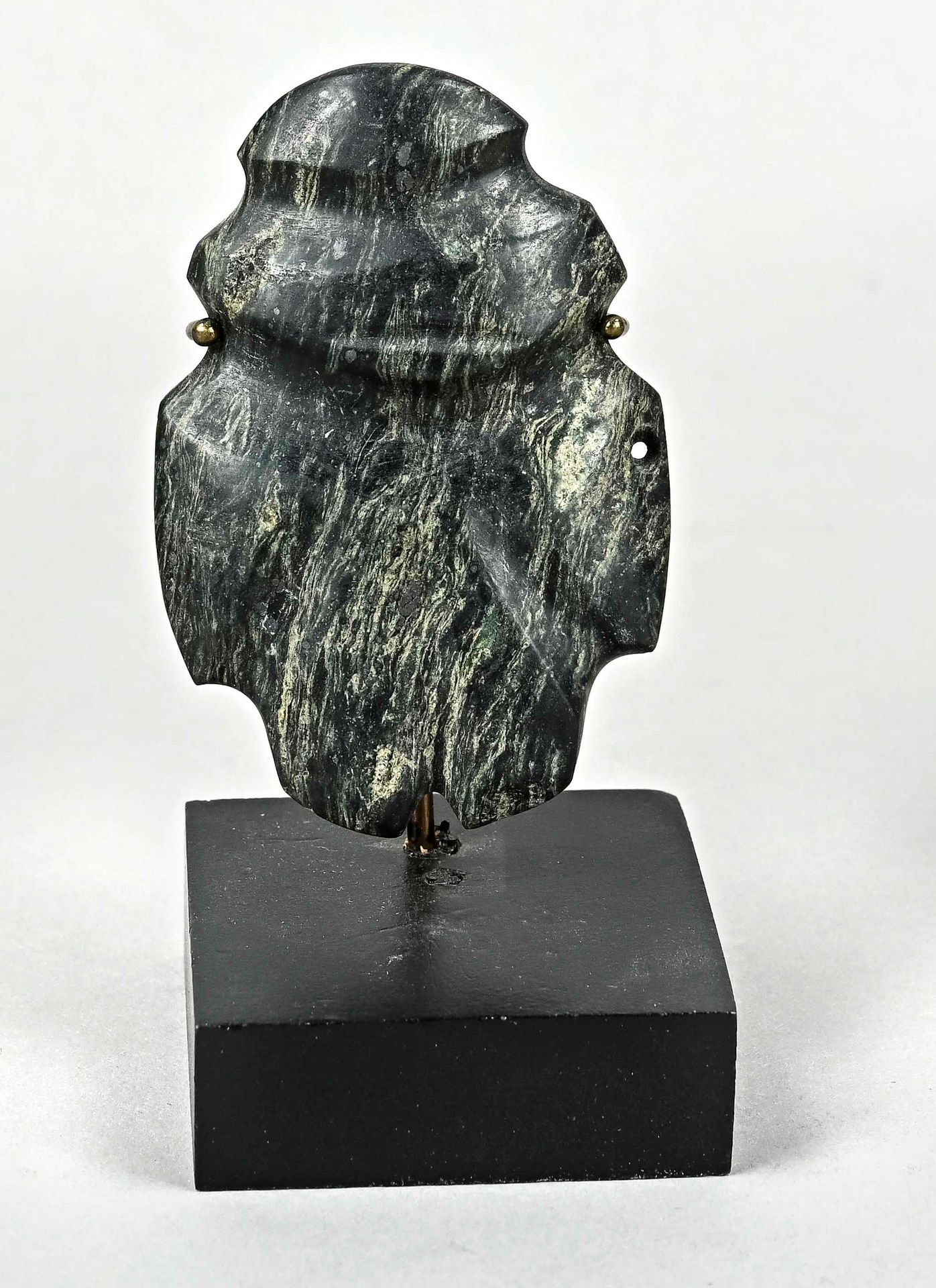Description
Small Axe Figure, Mezcala Culture, Guerrero, Mexico, Late Formative Period, ca 400 BC-100 AD, Type M-6, Green speckled serpentine. An early variant of Mezcala figures, the face is somewhat flat with oblique planes meeting at the central ridge to suggest a nose. With shortened legs and only slightly indicated arms. Thin mouth. The edges are soft, as if the object had been used a great deal. A single drilled hole under the right shoulder. H 8.4 cm These types of figures were used as ceremonial stone axe heads as offerings to the gods. Provenance: Collection August Maurer, before 1986 , Auction Vogler 2015, Private collection, Germany
927
Small Axe Figure, Mezcala Culture, Guerrero, Mexico, Late Formative Period, ca 400 BC-100 AD, Type M-6, Green speckled serpentine. An early variant of Mezcala figures, the face is somewhat flat with oblique planes meeting at the central ridge to suggest a nose. With shortened legs and only slightly indicated arms. Thin mouth. The edges are soft, as if the object had been used a great deal. A single drilled hole under the right shoulder. H 8.4 cm These types of figures were used as ceremonial stone axe heads as offerings to the gods. Provenance: Collection August Maurer, before 1986 , Auction Vogler 2015, Private collection, Germany
You may also like
